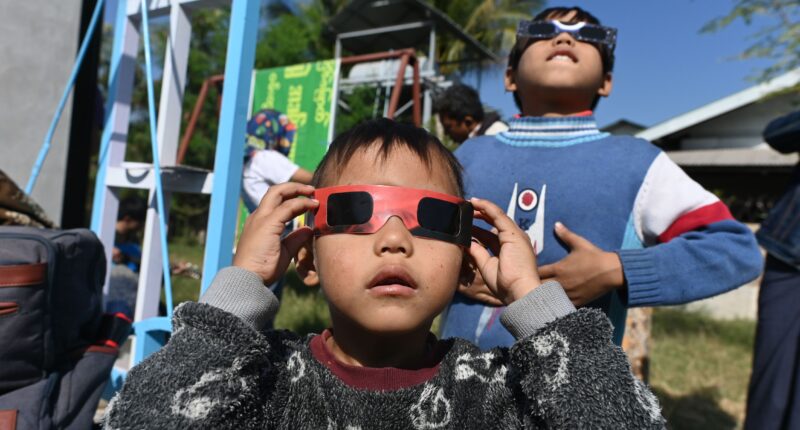A RARE solar eclipse has left viewers stunned as it cast a 40kilometre shadow over a remote town in Australia.
This particular celestial event is known as a ‘hybrid’ eclipse, which occurs only a handful of times per century.
The sky over Exmouth in Western Australia turned dark for around a minute on Thursday, when the Moon cast a 40km-wide shadow over the area.
A hybrid eclipse is when parts of the world can see either an annular eclipse or a total eclipse.
Partial eclipses were also visible across other parts of the Asia-Pacific.
Only those on the Exmouth Peninsula could experience the total solar eclipse, at 11:27 local time (04:27 BST).


A total eclipse shows the Moon fully blocking out the Sun and painting the sky black – when it should be daylight.
While others viewed what is known as an annual solar eclipse, when the Moon is too small to completely block out the Sun.
This is when sky gazers will be able to see a distinct and eery “ring of fire” in the sky, according to Nasa Sun scientist Dr Kelly Korreck.
The last hybrid solar eclipse was in November 2013, and Nasa expects the next in 2031.
Most read in Tech
Korreck explains: “What a solar eclipse is, it’s an alignment and a dance between the Moon, the Earth and the Sun.
“What happens during these events s that we can actually see with our own eyes the Sun’s corona, or hot outer atmosphere, and that’s something that before the space age, we couldn’t really do any other way.”
Studying solar winds in this way was key to discovering elements such as helium, Korreck says.
Nasa used this most recent eclipse for a kite experiment to learn more about how solar wind escapes eclipses.
Experts are set to use the kite again in 2024, when the eclipse arrives in North America.
Best Phone and Gadget tips and hacks

Looking for tips and hacks for your phone? Want to find those secret features within social media apps? We have you covered…
We pay for your stories! Do you have a story for The Sun Online Tech & Science team? Email us at [email protected]











